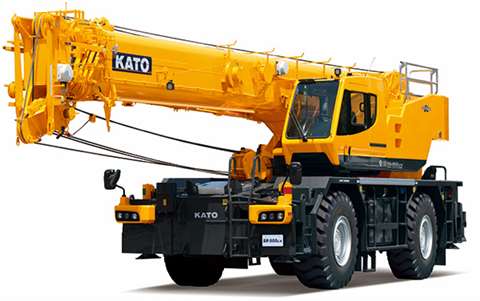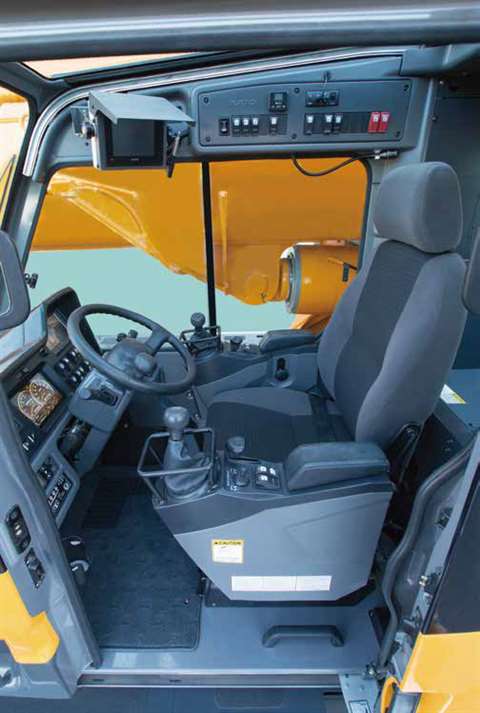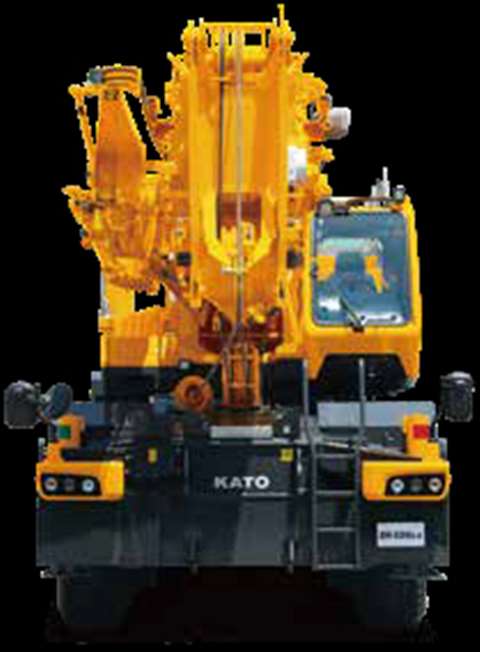Kato's new 51 tonne RT
16 October 2019

A 51 tonne capacity (at a 2.5 metre radius) rough terrain crane has been launched by manufacturer Kato in Japan.
The SR-500LX is ready for delivery with its 42 metre, five section telescopic boom. It has a 9.4 to 13.7 metre telescopic luffing jib called EJib which can be used with the main boom at any length. Capacity is 4.2 tonnes with the main boom set at 72 degrees and it gives a maximum lifting height of 57.1 metres. The jib can be offset between 5 and 60 degrees. Outriggers can be set at four positions, from a fully retracted 2.48 metres up to a spread of 7 metres fully extended.
Power is from a 200 kW, 7.5 litre Mitsubishi 6M60-TL straight six diesel with electronically controlled common rail fuel injection. Maximum torque is 785 Nm at 1,400 min-1.

Accommodation and controls are all improved over the previous model, Kato said. A touch screen allows monitoring and adjustment plus there is an Eco switch function to optimise engine speed according to what is required for the crane’s activity. Data logging is included and the new ACS moment limiter keeps capacity within a safety margin and allows working range limits to be set.
Dimensions for road travel are 2.9 metres wide, 12.76 metres long, including the boom overhang at the front, by 3.88 metres tall. Gross weight is given as 37.075 tonnes.







